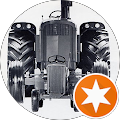When shopping for a new cooling system, you’ll often be advised to get the one with the highest SEER rating. Here is what it means and why it’s important to heed this advice.
What Is a SEER Rating?
SEER (seasonal energy efficiency ratio) rating is a metric that measures the efficiency of heat pumps and air conditioners over an entire cooling season. It accounts for weather patterns, typical usage, humidity, and temperature fluctuations to provide a comprehensive view of how well a system can maintain desired temperatures and comfort levels while using the least amount of energy possible.
SEER ratings typically range from 13 to 26. These numbers are ratios. For example, SEER 14 means that for every unit of energy consumed, the cooling system produces 14 units of cooling output. Therefore, the higher the number, the more efficient the system is.
The Switch to SEER2
You’ll notice that modern HVAC systems use SEER2 instead of SEER when defining efficiency ratings. This is because SEER2 is the updated standard, providing an even more accurate energy efficiency assessment based on real-world operating conditions.
The new rating system introduced external static pressure into the equation. This variable accounts for the resistance the air faces as it moves through the ductwork and registers in a home. You’ve probably noticed how ducts, filters, and registers significantly impact the performance of your HVAC system and general home comfort. In fact, technicians will always advise you to replace your filters frequently, keep the registers free of obstacles, and ensure the ductwork is properly sealed and insulated.
The Minimum SEER2 Ratings for Ducted Air Conditioners
The U.S. Department of Energy sets minimum HVAC energy efficiency requirements based on regions. The northern areas must use ACs with at least 13.4 SEER2 (or 14 SEER), while the southern regions must use units with a minimum SEER2 rating of 14.3 (15 SEER).
This difference in the minimum standard aims to strike a balance in energy use for home conditioning throughout the year. In a northern climate, heating is much more of an energy concern than cooling. People tend to use their heating systems more than their ACs. In contrast, in the south, homeowners run their ACs more frequently due to the hotter climate, making higher SEER2 ratings essential for cost savings.
The Minimum SEER2 Ratings for Ductless ACs and Heat Pumps
The minimum SEER2 rating for ductless ACs and heat pumps in both northern and southern regions is 14.3 (15 SEER). The standard is slightly higher because heat pumps and ductless AC units don’t lose as much energy as ducted systems when supplying warm air. Ducts are prone to energy loss due to leaks, poor insulation, or long runs, which generally makes ducted systems less efficient in comparison.
ENERGY STAR Systems
The safest way to guarantee cost savings is by investing in a system with an ENERGY STAR label. This label indicates that the Environmental Protection Agency (EPA) has certified the unit as meeting or exceeding strict energy efficiency guidelines. Such systems also offer better performance, features, and comfort than standard models.
Other Benefits of High SEER Ratings
Besides cost savings, investing in a system with high SEER ratings provides other benefits, such as:
Reduced Carbon Footprint
A system that consumes less energy draws less electricity from the power grid. This means fewer greenhouse gas emissions are associated with power generation, contributing to a cleaner and more sustainable environment.
Longer Lifespan
Efficient HVAC systems typically experience less wear and tear. They are designed to operate closer to their optimal performance point. Think of it like a car: Driving at steady speeds puts less strain on the engine than constantly accelerating and braking.
Efficient systems also tend to have lower operating temperatures. Heat is a huge problem for machines. It degrades lubricants, weakens materials, and accelerates corrosion. By working efficiently and optimally, HVAC systems don’t strain, which translates to lower operating temperatures and, thus, less wear.
Finally, efficient systems have longer and steadier cooling cycles. They don’t have to turn on and off as frequently, which reduces the mechanical stress on the components. All these features ensure the system lasts longer while performing at its best throughout its lifespan.
Improved Indoor Comfort
High SEER units are often equipped with advanced features that sustain efficiency. For example, some systems can adjust cooling cycles to optimize moisture removal. They may also come with variable speed compressors, accurate thermostat sensors, zoning capabilities, and efficient airflow design, which all contribute to better indoor temperature management. Reducing noise levels can also lead to better performance and efficiency. When a system doesn’t vibrate much or produce excessive noise, it means all its moving parts are operating smoothly and efficiently.
While most of these features are meant to improve efficiency, they also create a more comfortable environment as a side benefit. You’ll enjoy your home more with your family and friends.
Eligibility for Rebates and Incentives
Various government programs and energy companies offer rebates and incentives for individuals with energy-efficient systems. For instance, you can qualify for a federal tax credit when you have split ducted and packaged systems with a SEER2 rating of at least 15.2. For heat pumps and non-ducted ACs, the minimum SEER2 rating required is 16. These incentives can offset upfront costs, making it more affordable to invest in advanced, energy-efficient systems.
Maintaining Efficiency
Investing in a system with high SEER ratings is not enough to maximize your cost savings. You also need to consider the following factors:
Proper Installation
Before buying an HVAC system, you need to call a licensed HVAC technician to accurately determine your home size and layout, gauge your insulation levels, see how much sunshine your home is exposed to, and evaluate other factors that can affect cooling efficiency. This thorough assessment ensures that you select a system that is appropriately sized for your home’s specific cooling needs.
Once bought, the technician must ensure precise placement, correct ductwork configuration, and accurate calibration of the system components. Every detail matters since improper installation can lead to increased energy consumption, potential system malfunctions, and an uncomfortable indoor environment.
Thermostat Settings
You can optimize HVAC performance and efficiency with your thermostat settings. For instance, when you are at home, set your AC or heat pump to 78 degrees Fahrenheit and 85 degrees when away. Also, keep your fan settings on Auto. This means the fans will only run when your HVAC is actively cooling your space.
Schedule Regular Maintenance
At least once or twice a year, call a qualified technician to assess the condition of your system and tune it up for continued optimal performance. These systems need thorough cleaning, lubrication, recalibration, and, sometimes, parts replacement to keep them efficient and effective.
Contact Kalins Indoor Comfort for More Information
Understanding SEER ratings and their influence on your HVAC system is pivotal for cost savings and comfort during the hot summers. Kalins Indoor Comfort can guide you through choosing the right SEER rating for your HVAC system. The decision will be based on your local climate, budget, and long-term goals. Our company has spanned three generations of expertise in the HVAC industry, witnessing and partaking in every innovation and improvement in home cooling, safety, and comfort. We also offer other AC and heat pump services, including repairs, upgrades, and installations.
Call Kalins Indoor Comfort today for the best cooling choice for your home in Sioux City.











